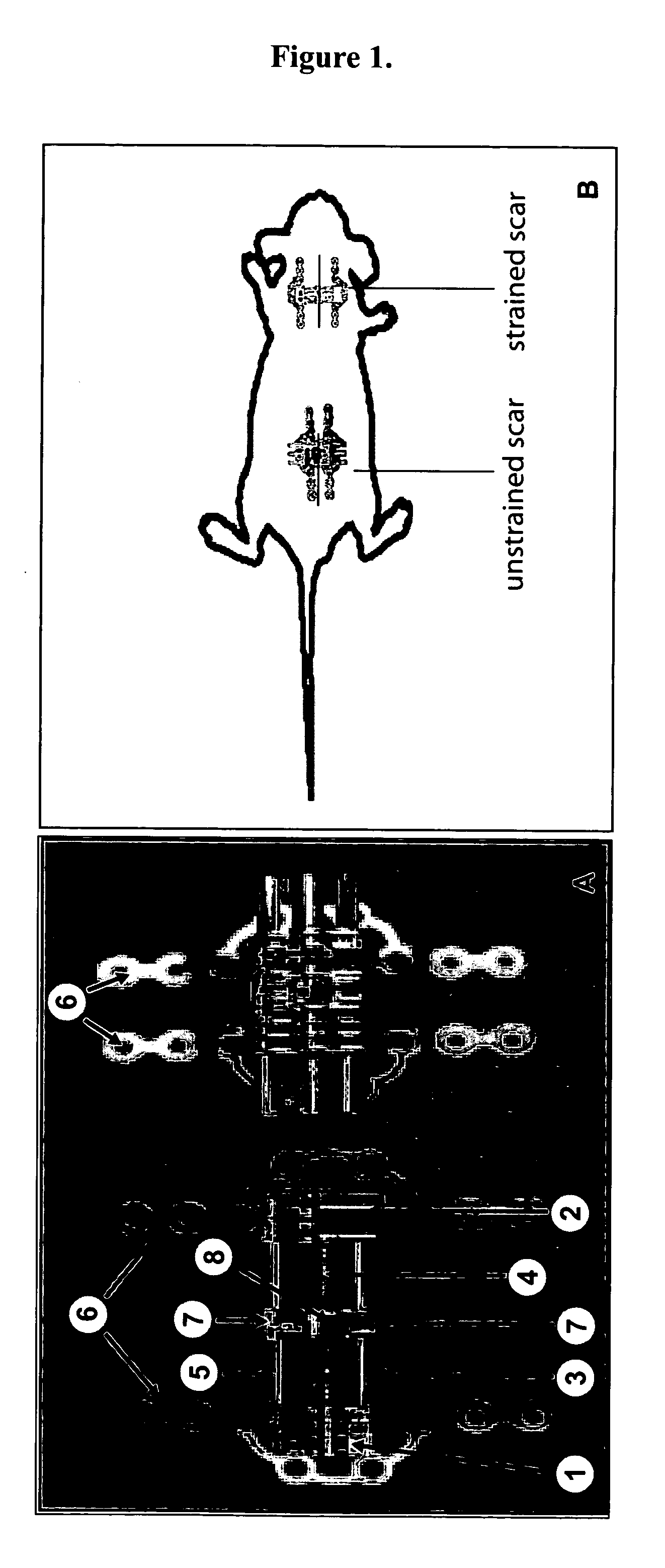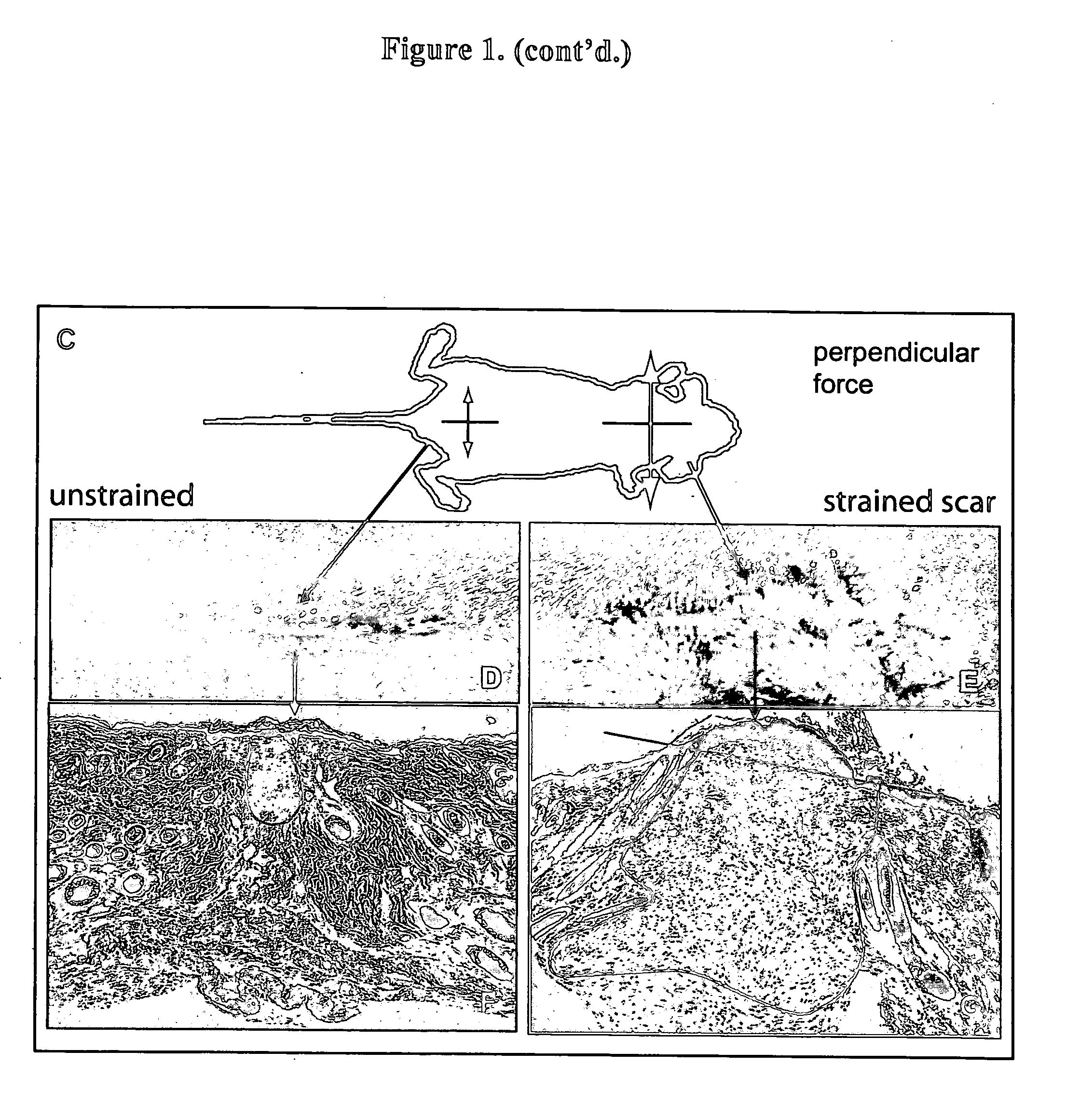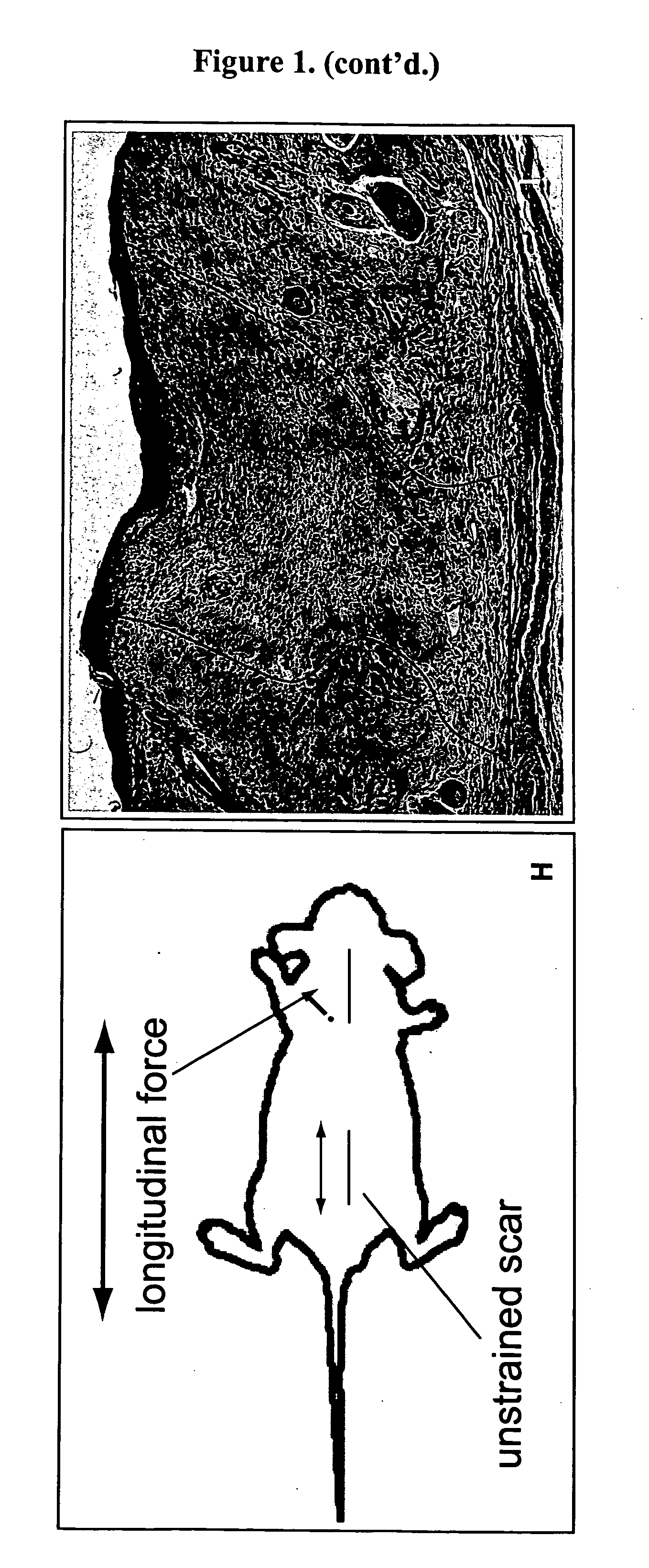Method for producing hypertrophic scarring animal model for identification of agents for prevention and treatment of human hypertrophic scarring
a hypertrophic scarring and animal model technology, applied in the field of producing a nonhuman animal model of hypertrophic scarring, can solve the problems of significant functional and aesthetic defects, achieve minimal scarring, reduce the risk of wound dehiscence (rupture), and improve the effect of volume and cellularity
- Summary
- Abstract
- Description
- Claims
- Application Information
AI Technical Summary
Benefits of technology
Problems solved by technology
Method used
Image
Examples
example 1
In Vivo Strain
[0047] Four week old C57 / BL6 mice were first acclimated and housed under standard conditions, using protocols approved by the New York University Animal Care and Use Committee. Mouse strains B6.129S2-Trp53tm1Tyj / J (anti-apoptotic) and B6.129S2-Bcl2tm1Sjk / J (pro-apoptotic) (Jackson Laboratory, Bar Harbor, Me.) were used for the knockout studies. Two 2 cm linear full-thickness incisions (1.25 cm apart) were made on the dorsum of the mouse and then reapproximated with 6-0 nylon sutures. On post-incision day 4, the sutures were removed from the scars, and two biomechanical strain devices, shown in FIG. 1A, were carefully secured with 6-0 nylon sutures, as shown in FIG. 2B. The biomechanical strain devices were constructed from 22-mm expansion screw (Great Lakes Orthodontic Products, Tonawanda, N.Y., USA) and Luhr (Stryker-Leibinger Co, Freiburg, Germany) plate supports, as shown in FIG. 1A. One wound served as an internal control, with the device not activated, while mech...
example 2
In Vitro Strain
[0050] In order to study the molecular mechanisms of mechanical strain on a cellular level, human (HTERT-BJ1, Clonetech, Palo Alto, Calif.) and primary murine fibroblasts was examined in vitro. A novel in vitro model as designed and described by Holmes (Costa et al., “Creating Alignment and Anisotropy in Engineered Heart Tissue: Role of Boundary Conditions in a Model Three-Dimensional Culture System,”Tissue Eng 9:567-577 (2003); Knezevic et al., “Isotonic Biaxial Loading of Fibroblast-Populated Collagen Gels: A Versatile, Low-Cost System for the Study of Mechanobiology,”Biomech Model Mechanobiol 1:59-67 (2002); Zimmerman et al., “Structural and Mechanical Factors Influencing Infarct Scar Collagen Organization,”Am J Physiol Heart Circ Physiol 278:H194-200 (2000), which are hereby incorporated by reference in their entirety) was utilized. Briefly, this model maintains fibroblasts in a three-dimensional matrix (fibroblast plated collagen lattice, “FPCL”), thereby closel...
example 3
Cell Culture
[0051] Human HTERT-BJ1 cells were grown in DMEM (Invitrogen, Carlsbad, Calif.) supplemented with 10% fetal bovine serum (Invitrogen, Carlsbad, Calif.) and 1% antimycotic / antibiotic at 37° C. in a CO2 incubator. The cells were serum-starved for 18 h prior to conducting the in vitro experiments.
PUM
| Property | Measurement | Unit |
|---|---|---|
| Strain point | aaaaa | aaaaa |
Abstract
Description
Claims
Application Information
 Login to View More
Login to View More - R&D
- Intellectual Property
- Life Sciences
- Materials
- Tech Scout
- Unparalleled Data Quality
- Higher Quality Content
- 60% Fewer Hallucinations
Browse by: Latest US Patents, China's latest patents, Technical Efficacy Thesaurus, Application Domain, Technology Topic, Popular Technical Reports.
© 2025 PatSnap. All rights reserved.Legal|Privacy policy|Modern Slavery Act Transparency Statement|Sitemap|About US| Contact US: help@patsnap.com



